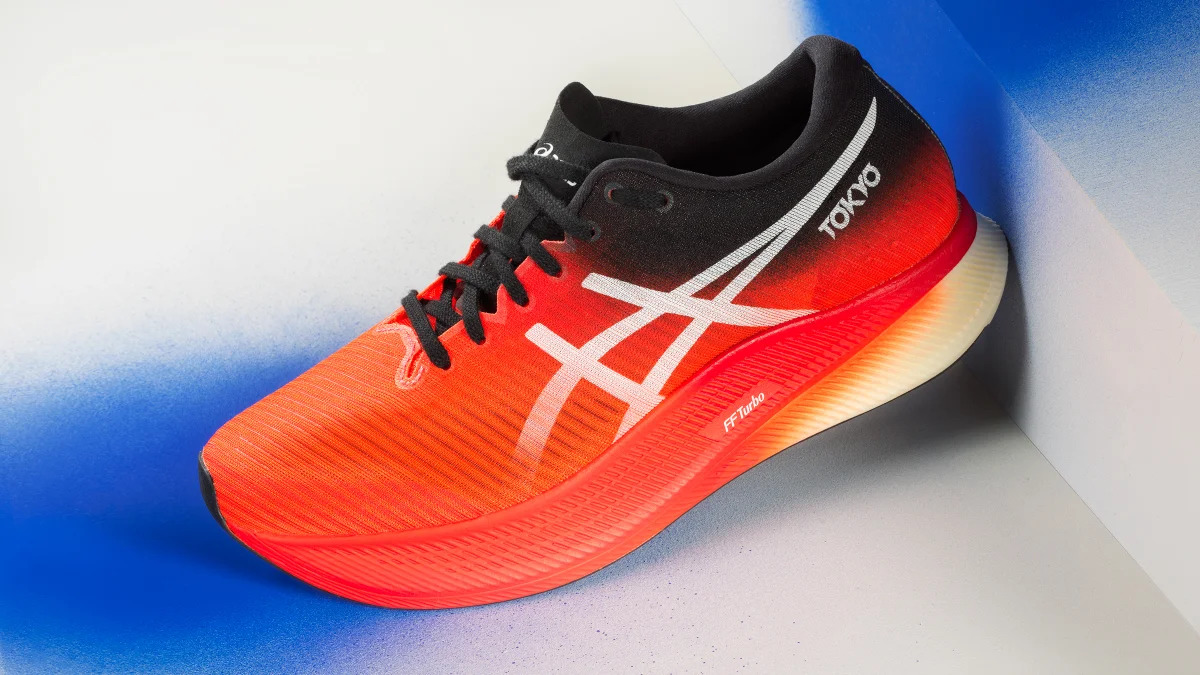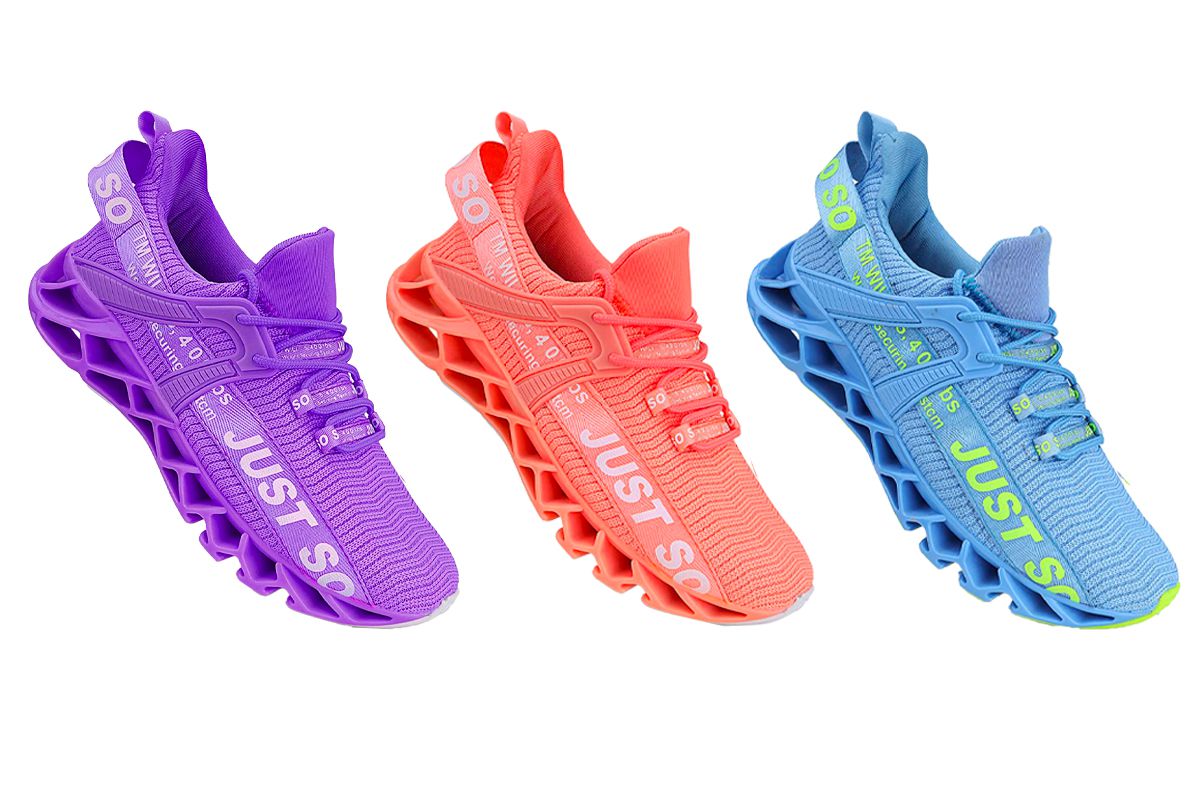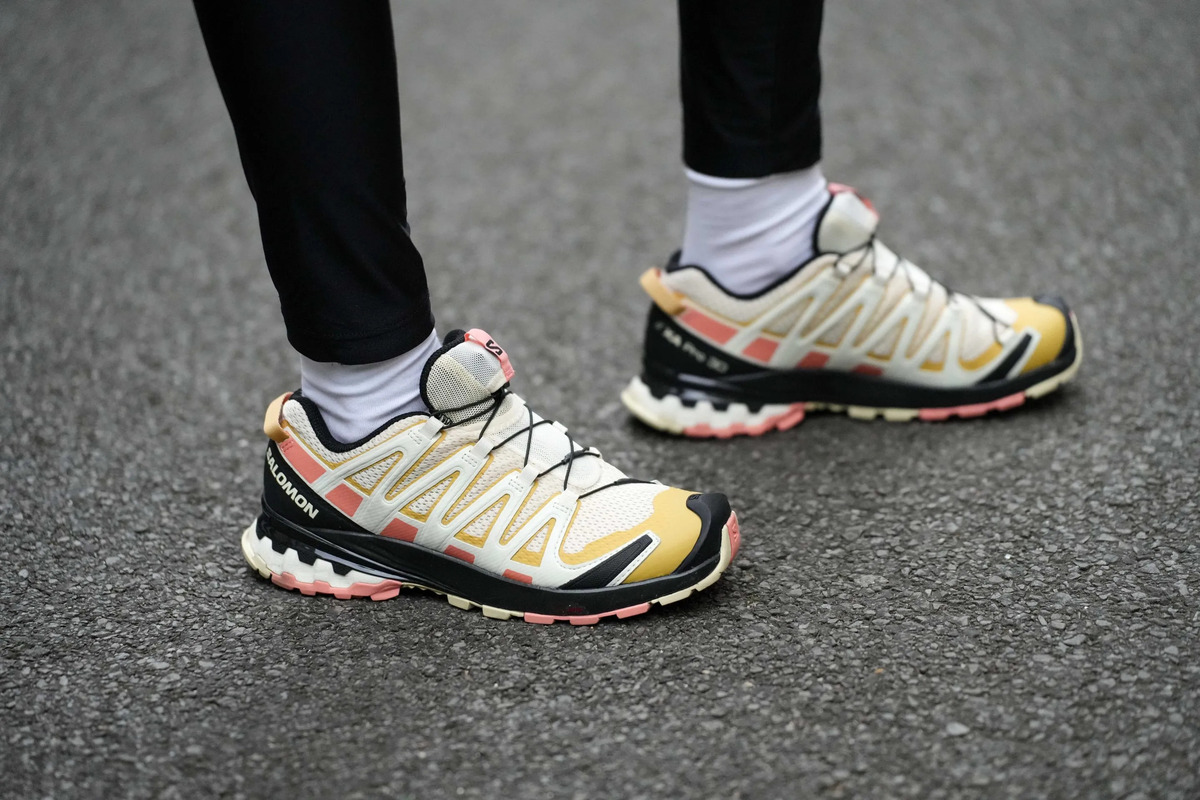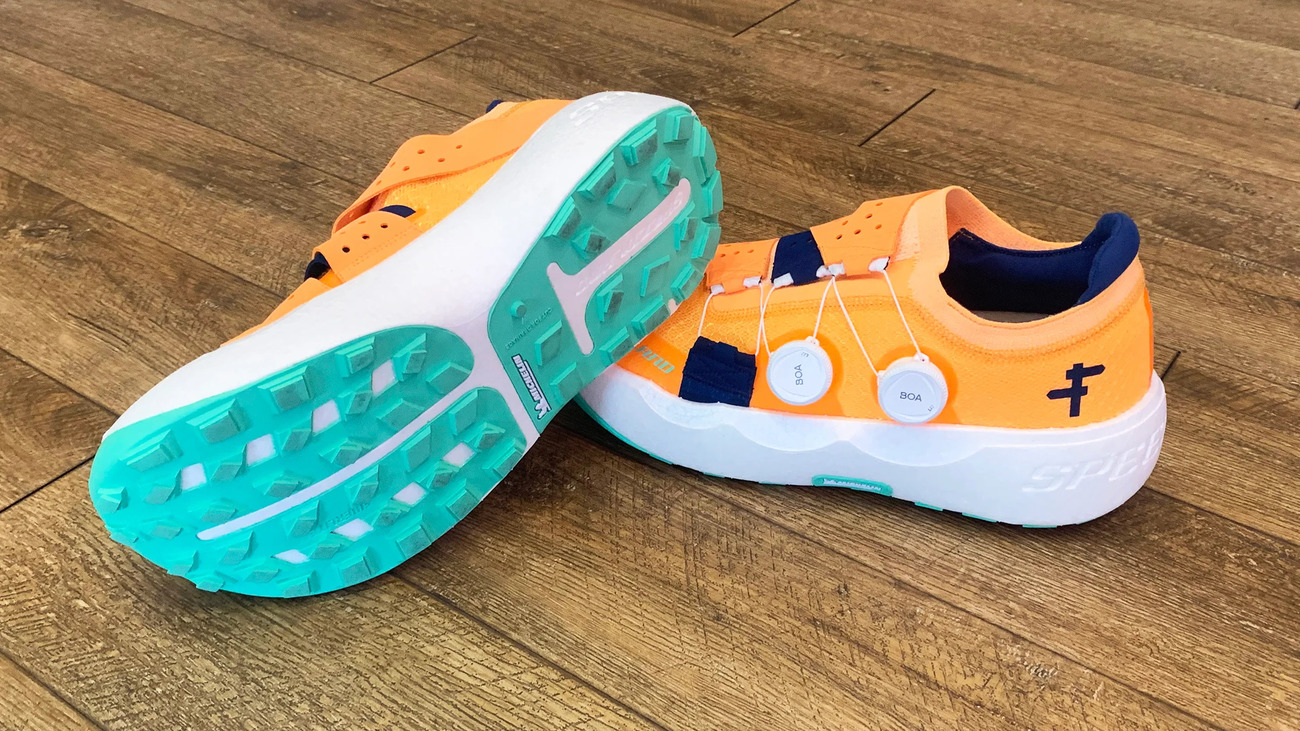Home>Misc>Featured>What Is Optimal Differential In Running Shoes?


Featured
What Is Optimal Differential In Running Shoes?
Modified: May 22, 2024
Discover the importance of optimal differential in running shoes and how it can enhance your performance. Get expert insights on the featured topic.
Introduction
Welcome to the world of running! Whether you’re a seasoned runner or just starting out, one of the most important aspects to consider when choosing running shoes is the optimal differential. You may have come across this term before, but what exactly does it mean and why is it so crucial?
The differential, also known as the heel-to-toe drop or simply the drop, refers to the difference in height between the heel and the forefoot of a running shoe. It affects the natural position of your foot and the distribution of impact forces as you run. Understanding and selecting the optimal differential for your running style and biomechanics can significantly impact your running performance and overall comfort.
In the past, most running shoes had a higher heel and a significant differential, aiming to provide cushioning and stability. However, recent trends in the running shoe industry have brought about a shift towards lower differentials, promoting a more natural and minimalistic running experience.
While there is no one-size-fits-all formula for determining the optimal differential, it is essential to consider several factors, including your running mechanics, body type, and personal preferences. By analyzing these factors and experimenting with different shoe differentials, you can find the perfect balance that suits your needs.
In this article, we will delve deeper into the concept of optimal differential in running shoes. We will explore its importance, discuss the factors to consider when determining the right differential for you, and highlight the benefits and potential drawbacks of running in shoes with an optimal differential. By the end, you will have a better understanding of how to choose the ideal differential to maximize your running performance and enjoyment.
Understanding Differential in Running Shoes
Before we dive into the importance of optimal differential, let’s first grasp the fundamentals of what the term entails. Differential, also referred to as heel-to-toe drop or simply “drop,” is the measurement of the difference in height between the heel and forefoot of a running shoe.
The differential directly affects the position of your foot while running, determining how much your heel is elevated compared to your forefoot. A higher differential means a greater elevation of the heel, while a lower differential signifies a flatter profile.
Traditionally, running shoes featured a higher differential, often around 10-12mm. The rationale behind this design was to provide extra cushioning and promote stability, particularly for runners with overpronation (excessive inward rolling of the foot) or those seeking more heel support.
However, in recent years, there has been a shift towards lower differentials in running shoe designs. This shift is influenced by the concept of natural or barefoot running, which advocates for a more minimalistic and biomechanically efficient approach.
Lower differential shoes, with drops ranging from 0-8mm or even zero-drop shoes, aim to mimic the natural position of the foot during running. The idea is to encourage a midfoot or forefoot strike, where the foot lands closer to the ball rather than the heel. This running gait is believed to offer a more efficient stride and reduce the risk of injuries associated with excessive heel striking.
Understanding the differential of your running shoes is vital because it directly impacts your running mechanics, foot strike pattern, and overall comfort. The right differential can enhance your performance, prevent injuries, and make your runs more enjoyable. On the contrary, an ill-fitting or inappropriate differential can lead to discomfort, inefficient movements, and potential overuse injuries.
Now that we have a basic understanding of what differential means in the context of running shoes, let’s explore why finding the optimal differential is crucial for runners of all levels.
Importance of Optimal Differential
Finding the optimal differential in running shoes is essential because it directly affects your running biomechanics, foot strike pattern, and overall comfort. Here are some key reasons why determining the right differential is crucial for runners:
1. Alignment and Stability: The optimal differential helps align your body during the running stride, promoting better posture and reducing the risk of misalignment-related injuries. It helps maintain a balanced distribution of impact forces from your heel to forefoot, improving stability and reducing excessive pronation or supination.
2. Natural Foot Movement: By choosing a differential that mimics the natural position of your foot during running, you encourage a more natural foot strike pattern. This can lead to a more efficient stride, allowing your foot and lower leg muscles to work optimally, potentially improving your running performance.
3. Responsiveness: The differential plays a role in the responsiveness of your shoes. A lower differential or even a zero-drop shoe can enhance the ground feel and sensitivity, allowing for better proprioception and feedback from the terrain, which can improve your agility and reaction time during runs.
4. Injury Prevention: Selecting the optimal differential based on your body type, running style, and foot mechanics can reduce the risk of common running injuries. Matching the differential to your unique needs can help mitigate issues such as plantar fasciitis, Achilles tendonitis, shin splints, and knee pain.
5. Comfort: The right differential can greatly impact your overall comfort while running. It can ensure that your feet are properly cushioned and supported, reducing excessive stress on certain areas. This can result in a more enjoyable and pain-free running experience.
Understanding the importance of finding the optimal differential is crucial in maximizing your running performance while minimizing the risk of injuries. However, determining the ideal differential is not a one-size-fits-all solution. It depends on several factors, which we will explore in the next section.
Factors to Consider in Determining Optimal Differential
Determining the optimal differential in running shoes is a personal process that requires consideration of several factors. Here are the key factors to keep in mind when finding the right differential for your needs:
1. Running Mechanics: Your running mechanics, including your foot strike pattern and pronation type, play a crucial role in determining the optimal differential. For example, if you have a midfoot or forefoot strike, a lower differential may be more suitable, while a higher differential could benefit runners with a heel strike.
2. Body Type: Your body weight and structure can influence the ideal differential for you. Heavier runners might benefit from a slightly higher differential to provide more cushioning and shock absorption, while lighter runners may prefer a lower differential for a more minimalist running experience.
3. Comfort and Preference: Comfort is subjective, and finding the optimal differential should also take into account your personal preference. Some runners may find a higher differential more comfortable, while others may prefer the feel of a lower or zero-drop shoe. Trying out different differentials and listening to your body’s feedback can help you determine what works best for you.
4. Terrain and Distance: The terrain and distance you typically run on can influence the ideal differential. If you primarily run on rugged trails, a higher differential with more stability and protection might be beneficial. Conversely, for shorter distances or track running, a lower differential may provide a more responsive and efficient stride.
5. Injury History: If you have a history of specific running injuries, such as Achilles tendonitis or plantar fasciitis, it is important to consider the differential that can help alleviate stress on those areas and support proper healing.
6. Gradual Transition: If you are considering switching to a shoe with a significantly different differential, it is crucial to make the transition gradually. Abruptly changing to a drastically different differential can put stress on your muscles, tendons, and joints, increasing the risk of injury. Gradually adapting to a new differential over a period of weeks or months allows your body to adjust and adapt.
Keep in mind that determining the optimal differential may require some trial and error. It’s essential to seek guidance from professionals, such as shoe experts or podiatrists, who can assess your running mechanics and provide recommendations based on your unique needs.
With a thorough understanding of these factors, you can now embark on the journey of finding your optimal differential, which can greatly enhance your running experience and performance.
Finding Your Optimal Differential
Discovering your optimal differential is a process that involves experimentation, listening to your body, and considering expert advice. Here are some steps to help you find the perfect differential for your running needs:
1. Assess your running mechanics: Start by analyzing your running mechanics, including your foot strike pattern and pronation type. This can provide valuable insights into the type of differential that might suit you best. Consider consulting a running specialist or a podiatrist to get a professional assessment.
2. Gradual transition: If you’re transitioning to a different differential, it’s essential to do so gradually to allow your body to adapt. Start by incorporating shorter runs or walking sessions in the new shoes to give your muscles and tendons time to adjust.
3. Consider your comfort: Pay attention to how your feet feel in different differentials. If you notice discomfort, pain, or abnormal sensations, it could indicate that the current differential is not suitable for you. Experiment with different options until you find the one that offers optimal comfort.
4. Seek expert advice: Shoe specialists, podiatrists, and running coaches can provide valuable insights on finding the right differential for your specific needs. They can analyze your running mechanics, recommend brands and models, and guide you through the process of finding the optimal differential.
5. Try different shoes: Different shoe brands and models may offer varying differentials, so it’s worth exploring different options. Visit a specialized running store and try on a variety of shoes to assess how they feel and how the differential affects your running stride.
6. Listen to your body: Ultimately, the most important factor in determining your optimal differential is listening to your body. Pay attention to how your feet, legs, and overall body respond to different shoe differentials. Your body will often give you feedback on what feels most comfortable and efficient for your running style.
Remember that discovering your optimal differential may take time and patience. It’s a personal journey that requires self-awareness and attention to detail. Don’t be afraid to experiment and make adjustments along the way until you find the optimal differential that allows you to perform at your best and enjoy your runs to the fullest.
Benefits of Running in Shoes with Optimal Differential
Running in shoes with the optimal differential can offer a range of benefits for runners of all levels. Here are some key advantages of choosing the right differential:
1. Improved Running Efficiency: Running shoes with the optimal differential promote a more natural foot strike pattern, which can lead to improved running efficiency. By encouraging a midfoot or forefoot strike, these shoes allow your foot to function in its biomechanically efficient position, potentially reducing energy waste and improving your overall running performance.
2. Enhanced Foot and Leg Stability: The right differential can help improve foot and leg stability during running. By aligning your foot and reducing excessive pronation or supination, shoes with the optimal differential can provide a more stable platform to propel forward, reducing the risk of ankle rolling and other related injuries.
3. Reduced Impact Forces: Optimal differential running shoes can help distribute impact forces more evenly across your foot. By cushioning and absorbing some of the shock during running, these shoes can help reduce the strain on your joints, particularly the ankles, knees, and hips. This can be particularly beneficial for runners who are prone to overuse injuries or have joint conditions.
4. Increased Proprioception: Shoes with the optimal differential tend to provide a better ground feel, allowing for increased proprioception (awareness of body position) while running. This heightened sensory feedback can improve your balance and stability on various terrains, enabling you to adapt quickly to changes in surface conditions.
5. Personalized Comfort: Running in shoes with the optimal differential ensures a higher level of comfort since they match your specific running mechanics and foot characteristics. The right differential can minimize discomfort by providing the ideal amount of cushioning and support where you need it most, enhancing your overall running experience.
6. Injury Prevention: Wearing shoes with the optimal differential that suits your biomechanics can help reduce the risk of common running injuries. By providing adequate support and alignment, these shoes can help mitigate stress on vulnerable areas, such as the arches, Achilles tendon, and shins, helping to prevent issues like plantar fasciitis, Achilles tendonitis, and shin splints.
By running in shoes with the optimal differential, you can enhance your running performance, reduce the risk of injuries, and enjoy a more comfortable and efficient running experience. However, it’s important to remember that what works for one runner may not work for another. Finding the right differential is a personal process that requires careful consideration of your unique needs and preferences.
Potential Drawbacks of Optimal Differential
While running in shoes with the optimal differential can have numerous benefits, it’s important to acknowledge that there may be some potential drawbacks to consider. Here are a few potential disadvantages of choosing the right differential:
1. Adaptation Period: Transitioning to a new differential, especially if it is significantly different from what you are accustomed to, may require an adaptation period. Your muscles and tendons need time to adjust to the new running mechanics, which could result in temporary discomfort or a heightened risk of overuse injuries if you push yourself too hard during this transition phase.
2. Limited Shoe Options: Depending on your specific needs and preferences, finding running shoes with the optimal differential may limit your options. Not all shoe brands or models may offer the exact differential you are looking for, which may require some additional searching and experimentation to find the right fit.
3. Reduced Cushioning: Lower differential shoes or minimalist options often have less cushioning compared to traditional higher differential shoes. While this can provide a more natural and connected feel to the ground, it may not provide the same level of shock absorption and cushioning for runners who require more support or have pre-existing conditions, such as plantar fasciitis or knee problems.
4. Increased Strain on Calf Muscles: Transitioning to low or zero-drop shoes with a lower differential may put increased strain on the calf muscles, particularly the Achilles tendon. The change in foot position and the demand for a different range of motion could potentially lead to calf tightness, soreness, or even Achilles tendonitis if not managed properly.
5. Individual Suitability: What works for one runner may not work for another when it comes to optimal differential. Each person has unique biomechanics, foot mechanics, and comfort preferences. It is important to consider your individual needs and consult with experts if needed to ensure that the optimal differential is suitable for your specific circumstances.
It is essential to weigh these potential drawbacks against the benefits and make an informed decision when selecting the optimal differential for your running shoes. What works for one person may not work for another, so it’s important to find the balance that works best for you based on your running style, biomechanics, and individual comfort level.
Conclusion
Choosing the optimal differential in running shoes is a crucial decision that can greatly impact your running performance, comfort, and injury prevention. Understanding your running mechanics, considering factors such as body type and personal preference, and seeking expert advice are all essential steps in finding the right differential.
The optimal differential varies for each individual, depending on factors such as running mechanics, body type, and personal comfort. Gradually transitioning to a different differential, listening to your body’s feedback, and seeking professional guidance can help you find the perfect fit.
Running in shoes with the optimal differential provides numerous benefits, including improved running efficiency, enhanced stability, reduced impact forces, increased proprioception, personalized comfort, and injury prevention. However, potential drawbacks, such as an adaptation period and reduced shoe options, should also be considered.
Ultimately, finding the optimal differential is a personal journey that requires self-awareness, experimentation, and continuous evaluation. By taking the time to understand your running mechanics and considering the factors discussed in this article, you can find the ideal differential that supports your running goals and enhances your overall running experience.
So, lace up your shoes, hit the road, and find your optimal differential to unlock your full running potential!









